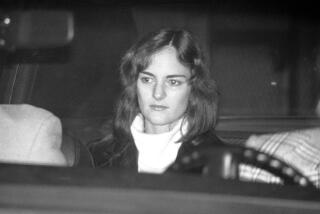OKLAHOMA CITY: AFTER THE BOMB : FAMOUS FUGITIVES
- Share via
The hunt for “John Doe No. 2” ranks as one of the biggest manhunts in American history. Some of the others:
John Dillinger: The gangster attracted national attention in the 1930s for his bank robberies and raids on police stations to free captured gang members. FBI Director J. Edgar Hoover declared Dillinger “Public Enemy No. 1” in 1933. In 1934, Dillinger had his face and fingerprint altered by a plastic surgeon. But he was betrayed by a woman who told federal agents she would be with Dillinger at a Chicago theater. The clue, she said, would be he red dress she would wear. On July 22, federal agents fatally shot Dillinger as he left the theater. His companion became known as the “lady in red.”
Bruno Hauptmann: The 19-month-old son of famed aviator Charles Lindbergh was kidnaped from the family home in New Jersey in 1932. The toddler’s body was found 10 weeks later. A two-year nationwide hunt led to the arrest of carpenter Bruno Hauptmann. He was found guilty and executed. The case led to the Lindbergh Law, which made kidnaping a federal offense if the victim is taken across state lines or the mail is used for ransom demands.
Lee Harvey Oswald: Just more than an hour after the assassination of President John F. Kennedy in 1963, Oswald was arrested in a movie theater. Before he could stand trial, the former Marine was shot to death by Jack Ruby while being moved between jails.
Patty Hearst: One of the most intense hunts for a fugitive was for newspaper heiress Patricia Hearst. The 21-year-old was first sought as a kidnap victim of the Symbionese Liberation Army, then as a gun-wielding--and apparently willing--member of that terrorist group. Virtually all of the FBI’s 8,500 agents were involved at some point in the hunt. A special squad interviewed 25,000 people in the San Francisco area alone. After a 10-month search, she was arrested in that city. Hearst served 23 months in prison before her sentence was commuted by President Jimmy Carter in 1979.
More to Read
Sign up for Essential California
The most important California stories and recommendations in your inbox every morning.
You may occasionally receive promotional content from the Los Angeles Times.













